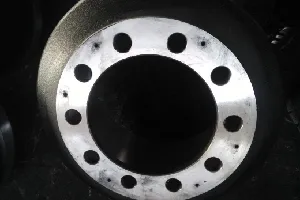
-
 Afrikaans
Afrikaans -
 Albanian
Albanian -
 Amharic
Amharic -
 Arabic
Arabic -
 Armenian
Armenian -
 Azerbaijani
Azerbaijani -
 Basque
Basque -
 Belarusian
Belarusian -
 Bengali
Bengali -
 Bosnian
Bosnian -
 Bulgarian
Bulgarian -
 Catalan
Catalan -
 Cebuano
Cebuano -
 Corsican
Corsican -
 Croatian
Croatian -
 Czech
Czech -
 Danish
Danish -
 Dutch
Dutch -
 English
English -
 Esperanto
Esperanto -
 Estonian
Estonian -
 Finnish
Finnish -
 French
French -
 Frisian
Frisian -
 Galician
Galician -
 Georgian
Georgian -
 German
German -
 Greek
Greek -
 Gujarati
Gujarati -
 Haitian Creole
Haitian Creole -
 hausa
hausa -
 hawaiian
hawaiian -
 Hebrew
Hebrew -
 Hindi
Hindi -
 Miao
Miao -
 Hungarian
Hungarian -
 Icelandic
Icelandic -
 igbo
igbo -
 Indonesian
Indonesian -
 irish
irish -
 Italian
Italian -
 Japanese
Japanese -
 Javanese
Javanese -
 Kannada
Kannada -
 kazakh
kazakh -
 Khmer
Khmer -
 Rwandese
Rwandese -
 Korean
Korean -
 Kurdish
Kurdish -
 Kyrgyz
Kyrgyz -
 Lao
Lao -
 Latin
Latin -
 Latvian
Latvian -
 Lithuanian
Lithuanian -
 Luxembourgish
Luxembourgish -
 Macedonian
Macedonian -
 Malgashi
Malgashi -
 Malay
Malay -
 Malayalam
Malayalam -
 Maltese
Maltese -
 Maori
Maori -
 Marathi
Marathi -
 Mongolian
Mongolian -
 Myanmar
Myanmar -
 Nepali
Nepali -
 Norwegian
Norwegian -
 Norwegian
Norwegian -
 Occitan
Occitan -
 Pashto
Pashto -
 Persian
Persian -
 Polish
Polish -
 Portuguese
Portuguese -
 Punjabi
Punjabi -
 Romanian
Romanian -
 Russian
Russian -
 Samoan
Samoan -
 Scottish Gaelic
Scottish Gaelic -
 Serbian
Serbian -
 Sesotho
Sesotho -
 Shona
Shona -
 Sindhi
Sindhi -
 Sinhala
Sinhala -
 Slovak
Slovak -
 Slovenian
Slovenian -
 Somali
Somali -
 Spanish
Spanish -
 Sundanese
Sundanese -
 Swahili
Swahili -
 Swedish
Swedish -
 Tagalog
Tagalog -
 Tajik
Tajik -
 Tamil
Tamil -
 Tatar
Tatar -
 Telugu
Telugu -
 Thai
Thai -
 Turkish
Turkish -
 Turkmen
Turkmen -
 Ukrainian
Ukrainian -
 Urdu
Urdu -
 Uighur
Uighur -
 Uzbek
Uzbek -
 Vietnamese
Vietnamese -
 Welsh
Welsh -
 Bantu
Bantu -
 Yiddish
Yiddish -
 Yoruba
Yoruba -
 Zulu
Zulu
brake drum pdf
Understanding Brake Drums Function and Importance
Brake drums are a critical component of the braking system in many vehicles, especially those with drum brake systems. Understanding the structure, function, and maintenance of brake drums is vital for ensuring the safety and efficiency of a vehicle's braking performance.
What is a Brake Drum?
A brake drum is a cylindrical component that houses the brake shoes in a drum brake system. When the brake pedal is pressed, hydraulic pressure is applied, forcing the brake shoes outward against the inner surface of the drum. This friction between the shoes and the drum slows the wheel's rotation, effectively bringing the vehicle to a stop. Brake drums are typically made of cast iron or aluminum, chosen for their strength and ability to dissipate heat generated during braking.
The Function of Brake Drums
The primary function of brake drums is to provide a surface for the brake shoes to create friction. When the brake is applied, the shoes expand and press against the inside of the drum. This generates the necessary friction to slow down or stop the vehicle. The design of the drum permits effective management of heat, as the rotating drum dissipates heat generated during braking, which is crucial in preventing brake fade – a reduction in stopping power.
In addition to their main function, brake drums also help maintain wheel alignment and provide a robust structure that accommodates the spring mechanisms that return the brake shoes to their resting position when the brake is released. This return action is essential for ensuring that the brakes do not drag, which can lead to decreased fuel efficiency and increased wear on the brake components.
Maintenance of Brake Drums
Regular maintenance is key to the longevity and performance of brake drums. A few critical aspects of maintenance include
brake drum pdf

1. Inspection Periodic inspection of brake drums is essential. Look for signs of wear, such as scoring or cracking, which can compromise their effectiveness. If the diameter of the drum is greater than the manufacturer's specified limit, the drum may need to be replaced.
2. Cleaning Dust and debris can accumulate inside and around the brake drums. Regular cleaning will help maintain performance and prevent unnecessary wear on the brake shoes.
3. Adjustment Drum brakes often require periodic adjustment, as the brake shoes can wear down, causing misalignment. Keeping the brake shoes properly adjusted ensures that they make contact with the drum effectively, maximizing braking power.
4. Replacement Over time, brake drums will wear and may need to be replaced. Signs that replacement is necessary include unusual noises when braking, a spongy brake pedal, or a noticeable decrease in braking performance.
The Importance of Properly Functioning Brake Drums
Ensuring that brake drums are in good working order is crucial for vehicle safety. Faulty drums can lead to longer stopping distances and increased risk of accidents. It’s important to note that the effectiveness of a drum brake system can be influenced by various factors, including the quality of the materials, the specific vehicle design, and driving conditions.
In high-performance or heavy-duty applications, such as in commercial vehicles, the demands on brake systems are significantly greater. As such, high-quality brake drums designed for durability and resistance to heat build-up are often utilized.
Conclusion
In summary, brake drums play an essential role in the braking system of many vehicles. Understanding their function, maintenance needs, and signs of wear can greatly contribute to safe driving practices. Regular inspections and adherence to maintenance protocols ensure that brake drums perform optimally, thereby enhancing overall vehicle safety. As with any automotive component, prioritizing care for brake drums is key to ensuring a reliable and safe driving experience.
-
What Are Drum BrakesNewsJul.07,2025
-
Understanding Brake Drum MaterialNewsJul.07,2025
-
Semi-Trailer Brake Drum: A Key Component for Extreme Loads and Long-Distance TransportNewsJul.07,2025
-
Drum Brake Pads for SaleNewsJul.07,2025
-
Brake Drums for SaleNewsJul.07,2025
-
Brake Drum ManufacturerNewsJul.07,2025
-
Aluminum Brake Drums: The Future of High-Performance CarsNewsJul.07,2025
